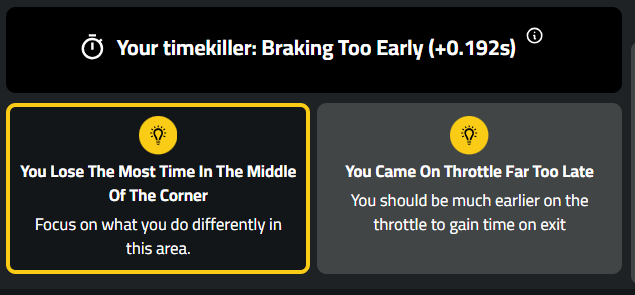Ferrari 296 GT3 COTA HYMO Hot Lap Analysis
Let’s take a look at this hot lap of COTA in the Ferrari 296 GT3 driven by HYMO.
The Track
Navigating this expansive and technically demanding track can pose challenges in car setup. Negotiating through turns like Turn 1, the Esses, and the Carousel at Circuit of the Americas (COTA) requires a delicate balance. Luckily, HYMO has your back, offering the same setup used in the featured hot lap video HERE.
Established in 2012, Circuit of the Americas has quickly become an iconic racetrack. Hosting the Formula One United States Grand Prix since its inception, the circuit offers a mix of elevation changes, intricate corners like Turn 1, and challenging sequences like the Esses. The venue has also been a fixture in the FIA World Endurance Championship, adding to its illustrious racing history since its opening.
Analysis
We can use the Track Titan software to compare a community driver to the HYMO driver through Turn 1. Starting off the lap with a tight left hand hairpin over the crest of a hill, this is a very difficult corner to get right. It requires the driver to use trail braking to rotate the car and take a wide exit to carry the maximum speed. In this case, the community driver (in dark blue) doesn’t trail brake, and doesn’t use enough road on the exit and loses over 4 tenths of a second before the next corner.
We can see from the braking graph that the community driver (in dark blue) brakes slightly later than the HYMO driver. This, combined with the lack of trail braking, causes them to miss the apex. They then don’t have as much space on the exit, which means they are still turning to make the corner, while the HYMO driver is already getting on the throttle. This is possible because the HYMO driver used trail braking to rotate the car over the crest of the hill, meaning they are pointing towards the exit of the corner earlier, giving them a straighter line and allowing an earlier throttle input.

You can analyse every other turn in the Track Titan platform; see reference lap here.
You can also take it to the next level and compare it against your own driving, just sign up to Track Titan for FREE today here.
Sim Racing Top Tips
Force feedback is a vital component in sim racing as it provides tactile information about the car’s interaction with the road. This feedback allows you to feel the grip level of the tires, the weight transfer of the car, and even the texture of the road surface. Properly setting up force feedback can enhance the realism of the simulation and provide you with valuable information that can help you react faster and drive more smoothly.
The strength and sensitivity of the force feedback should be adjusted according to your personal preference and the specific requirements of each game. Too strong force feedback can make the wheel hard to turn and tire you out quickly, while too weak force feedback may not provide enough information for you to react in time. A well-adjusted force feedback can help you become more immersed in the game and improve your lap times.
Put your new settings to the test, and join Track Titan today!


.png)























